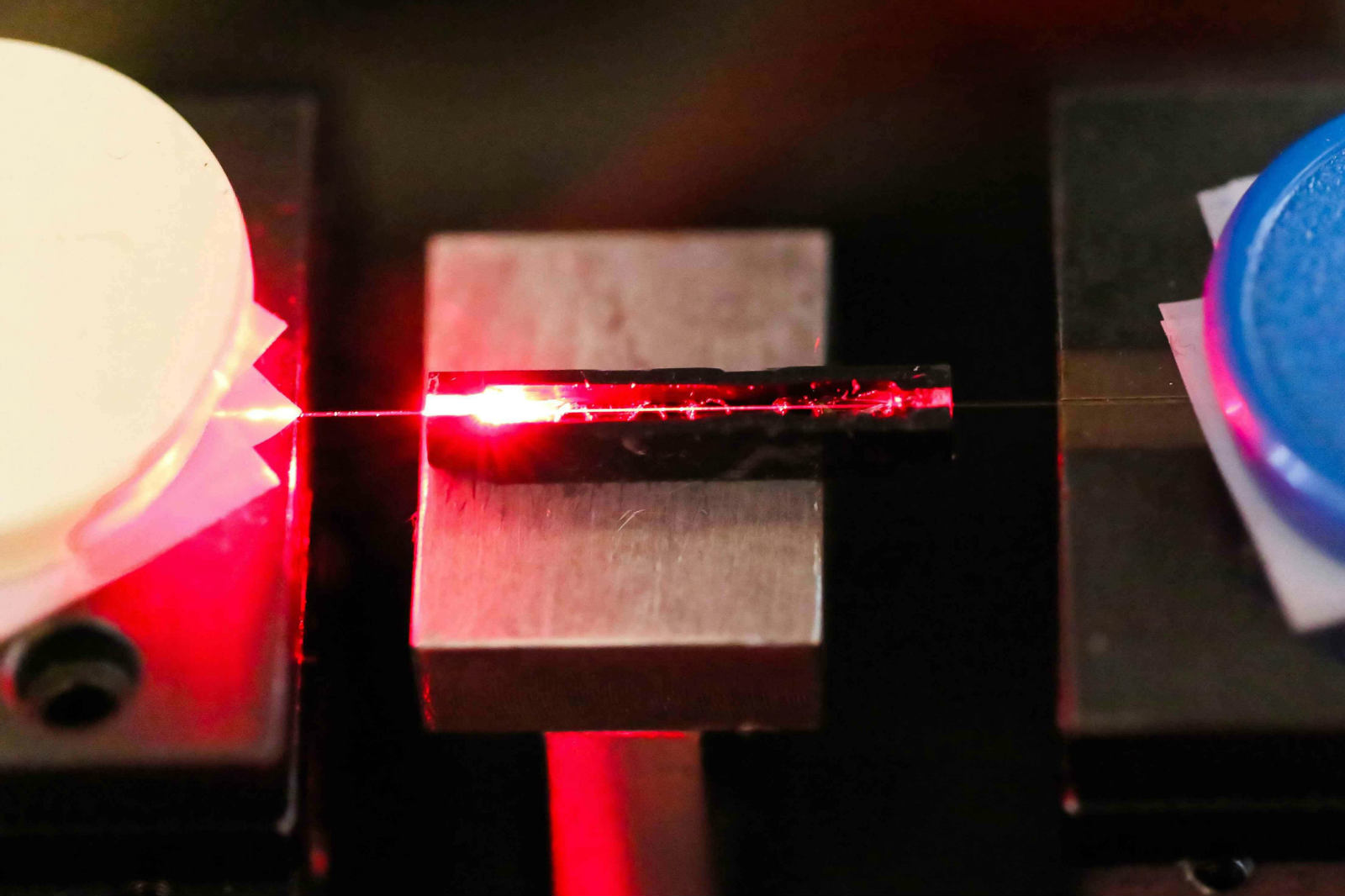


CGTN photo
Wearable body sensors are becoming the latest "must-have" technology. Now scientists from the Tsinghua University in China report they are using silk to develop a more sensitive and flexible device that could monitor a slew of body functions in real time.
Body sensors, which are usually made with semiconductors, have shown great potential for monitoring human health. But they have limitations. For instance, strain sensors, which measure changes in force, cannot be highly sensitive and highly stretchable at the same time.

Using spider silk to detect molecules/EPFL news Photo
Silk, a natural fiber that is stronger than steel and more flexible than nylon, could overcome these problems, according to a new report by Science Daily.
"Silk is the ideal material for fabricating sensors that are worn on the body," said Ph D Yingying Zhang, who led the research.
At the same time, the material is also lightweight and bio-compatible.
"One possibility is to be used as an integrated wireless system that would allow doctors to more easily monitor patients remotely so that they can respond to their medical needs more rapidly than ever before," Zhang said.
However, this material doesn't conduct electricity very well. To address this challenge, researchers tried two methods to boost the conductivity of silk so that it could be successfully be used in body-sensing devices.

Silk sensors could speed development of new infrastructure, aerospace and consumer materials /Phys.org Photo
In one method, researchers treated silk in an inert gas environment with temperatures ranging from 1,112 degrees to 5,432 degrees Fahrenheit. Consequently, the silk became infused with N-doped carbon with some graphitized particles, which is electrically conductive. Based on this theory, researchers have developed different sensor product, including strain sensors, pressure sensors and a dual-mode sensor, all of which are capable of measuring temperature and pressure at the same time.
In the other method, the team fed either carbon nanotubes or graphene to silkworms. Some of these nanoparticles were naturally added into the silk produced by the worms. Though this method has not produced electrically conductive fibers so far, researchers are still experimenting with it. It could be used to build more practical robots that need to be more sensitive to touch and temperature and can even differentiate between people's voices, researchers said.

 Award-winning photos show poverty reduction achievements in NE China's Jilin province
Award-winning photos show poverty reduction achievements in NE China's Jilin province People dance to greet advent of New Year in Ameiqituo Town, Guizhou
People dance to greet advent of New Year in Ameiqituo Town, Guizhou Fire brigade in Shanghai holds group wedding
Fire brigade in Shanghai holds group wedding Tourists enjoy ice sculptures in Datan Town, north China
Tourists enjoy ice sculptures in Datan Town, north China Sunset scenery of Dayan Pagoda in Xi'an
Sunset scenery of Dayan Pagoda in Xi'an Tourists have fun at scenic spot in Nanlong Town, NW China
Tourists have fun at scenic spot in Nanlong Town, NW China Harbin attracts tourists by making best use of ice in winter
Harbin attracts tourists by making best use of ice in winter In pics: FIS Alpine Ski Women's World Cup Slalom
In pics: FIS Alpine Ski Women's World Cup Slalom Black-necked cranes rest at reservoir in Lhunzhub County, Lhasa
Black-necked cranes rest at reservoir in Lhunzhub County, Lhasa China's FAST telescope will be available to foreign scientists in April
China's FAST telescope will be available to foreign scientists in April